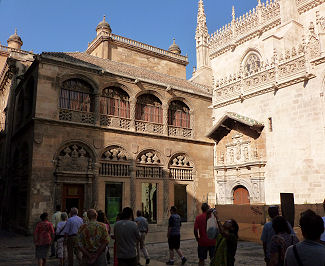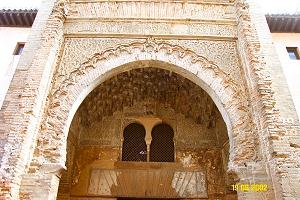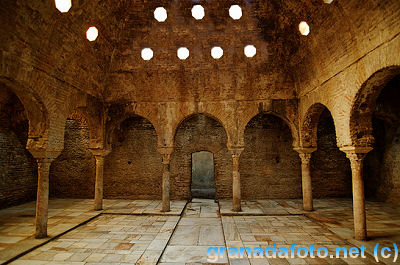пятница, 28 февраля 2014 г.
четверг, 27 февраля 2014 г.
среда, 26 февраля 2014 г.
вторник, 25 февраля 2014 г.
понедельник, 24 февраля 2014 г.
TARQUINIA:
THE NATIONAL ETRUSCAN MUSEUM:
Tusday - Sunday starting from 08.30 a.m. to 07:30 p.m.
Ticket € 6,00 – Museum and Necropolis € 8,00
THE ETRUSCAN NECROPOLIS (MONTEROZZI - CALVARIO):
Tusday - Sunday starting from 08.30 a.m. to 05.00 p.m. in the winter time
Tusday - Sunday starting from 08.30 a.m. to 07.00 p.m. in the summer time
Ticket € 6,00 – Museum and Necropolis € 8,00
VIA DEI PRINCIPI:
Always open itinerary.
Free admission.
SANTA MARIA IN CASTELLO CHURCH and the TOWER OF MATILDE OF CANOSSA:
Friday - Sunday starting from 10:30 a.m. to 12:30 a.m
Free admission.
SAN GIACOMO CHURCH, SALVATORE CHURCH:
Friday - Sunday starting from 10:30 a.m. to 12:30 a.m
Free admission.
MUSEUM OF CERAMICS:
(Via delle Torri, 29/31)
Tusday - Sunday starting from 08.30 a.m. to 07:30 p.m.
Ticket € 6,00 – Museum and Necropolis € 8,00
THE ETRUSCAN NECROPOLIS (MONTEROZZI - CALVARIO):
Tusday - Sunday starting from 08.30 a.m. to 05.00 p.m. in the winter time
Tusday - Sunday starting from 08.30 a.m. to 07.00 p.m. in the summer time
Ticket € 6,00 – Museum and Necropolis € 8,00
VIA DEI PRINCIPI:
Always open itinerary.
Free admission.
SANTA MARIA IN CASTELLO CHURCH and the TOWER OF MATILDE OF CANOSSA:
Friday - Sunday starting from 10:30 a.m. to 12:30 a.m
Free admission.
SAN GIACOMO CHURCH, SALVATORE CHURCH:
Friday - Sunday starting from 10:30 a.m. to 12:30 a.m
Free admission.
MUSEUM OF CERAMICS:
(Via delle Torri, 29/31)
MUSEUM OF HOLY ART AT TARQUINIA:
(Via Roma, 11)
Friday - Sunday starting from 05:00 p.m. to 19:00 p.m.
Free admission.
CITY OF TARQUINIA
CITY OF TARQUINIA
Tarquinia, as we know it today, was called Corneto up until the 19th century. The name Corneto may derive from the presence of plants of Corniolo (Corgnitum), or perhaps from the mythical king, Corito, its founder and ancestor of Aeneas.
The city has indefinable origins. It was a Catholic Episcopalian center beginning in the 4th century A.D.
Petrarch defined Corneto as "Turritum et spectabile oppidum, gemino cinctum muro". In other words, a beautiful, fortified town surrounded by a double wall that dominated the view of travelers with its 38 majestic towers.
Since the middle of the 12th century it was a free city, in the 13th century the city reinforced its status and increasingly tied to Rome, which was the best buyer of the rich production of wheat.
Between the end of the 15th century and the beginning of the 16th Corneto suffered the onslaught of two grave pestilences which reduced the population to two thirds of what it had been and contributed to the decadence of the city's architectural patrimony. At the end of the 18th century and again at the beginning of the 19th century, the city was twice occupied by French troops. In 1815 Corneto returned under the reign of the Church as a Papal State and in 1870 was annexed by the kingdom of Italy. Finally in 1872 the city assumed the name of Corneto-Tarquinia and then definitely that of Tarquinia in 1922. Throughout the course of time Tarquinia continued to be enriched with splendid palaces and churches all of which were subject to the predominant culture at the moment of construction as well as to the tastes of who governed within the Papal State or who wielded power. Today wandering through the winding streets of Tarquinia one can note Roman style architecture from the 12th-14th century along with Gothic and Renaissance motifs intertwine. The educated eye can spot Renaissance, Baroque and Neoclassical palaces with a variety of forms and decorations. This eclectic trend continued in the phase after Italy was united and has spread throughout the major part of Italy.
Tarquinia, as we know it today, was called Corneto up until the 19th century. The name Corneto may derive from the presence of plants of Corniolo (Corgnitum), or perhaps from the mythical king, Corito, its founder and ancestor of Aeneas.
The city has indefinable origins. It was a Catholic Episcopalian center beginning in the 4th century A.D.
Petrarch defined Corneto as "Turritum et spectabile oppidum, gemino cinctum muro". In other words, a beautiful, fortified town surrounded by a double wall that dominated the view of travelers with its 38 majestic towers.
Since the middle of the 12th century it was a free city, in the 13th century the city reinforced its status and increasingly tied to Rome, which was the best buyer of the rich production of wheat.
Between the end of the 15th century and the beginning of the 16th Corneto suffered the onslaught of two grave pestilences which reduced the population to two thirds of what it had been and contributed to the decadence of the city's architectural patrimony. At the end of the 18th century and again at the beginning of the 19th century, the city was twice occupied by French troops. In 1815 Corneto returned under the reign of the Church as a Papal State and in 1870 was annexed by the kingdom of Italy. Finally in 1872 the city assumed the name of Corneto-Tarquinia and then definitely that of Tarquinia in 1922. Throughout the course of time Tarquinia continued to be enriched with splendid palaces and churches all of which were subject to the predominant culture at the moment of construction as well as to the tastes of who governed within the Papal State or who wielded power. Today wandering through the winding streets of Tarquinia one can note Roman style architecture from the 12th-14th century along with Gothic and Renaissance motifs intertwine. The educated eye can spot Renaissance, Baroque and Neoclassical palaces with a variety of forms and decorations. This eclectic trend continued in the phase after Italy was united and has spread throughout the major part of Italy.
Tarquinia
Tarquinia
 Tarquinia is situated approximately ten kilometers from Civitavecchia, taking the Aurelia in the direction of Grosseto.
Tarquinia is situated approximately ten kilometers from Civitavecchia, taking the Aurelia in the direction of Grosseto.
On the basis of its characteristics, this town may be observed from two aspects,: on the one side it presents itself like an ideal locality for the Summer (Lido of Tarquinia);.
The second aspect which is important to emphasize is the enormous cultural and archeological validity which this location possesses: Tarquinia is known to all for its importance as an Etruscan city and for the numerous necropolis inside which are preserves some splendid examples of paintings.
The painted tombs are mostly found inside the necropolis of Montarozzi and are very important since, because of the numerous images which the ancient Etruscans painted on their walls, these have provided enthusiasts with the opportunity to obtain more in depth knowledge of the daily life, art and religious beliefs if these people.
But Tarquinia, with its towers, austere roman Churches, small homes that face alleys and its medieval monuments of notable importance, is also a city where art and medieval culture are deeply rooted.
Visit itinerary
Upon entering the town, one is in where the visitor is immediately impressed by the size of Palazzo Vitelleschi, the seat of the national museum. To the south of the square one takes via Umberto I, and enters the Castro Nuovo area where it is possible to admire, in Piazza Belvedere, the church of S. Antonio, in Roman-gothic style and the church of Santa Lucia.
Still near Via Umberto I, it is possible to admire the church of San Giovanni Battista (XIII century): the coat of arms of the Knights of Malta, located on the central door, is surmounted by a beautiful rose window with a halo of small columns. Taking via della Salute, after turning left in Via Garibaldi, one reaches Piazza Matteotti on the left side of which there is the church of the Suffrage, a splendid example of Roman baroque.
Nearby surges the large Roman style municipal building (XI century) with ample pieces of baroque.
From Piazza Matteotti, following the tree-lined Dante Alighieri, one reaches a lookout situated above the city walls, from where one can enjoy a splendid view of the valley, the hills of Civita and the Necropolis.
Going back one turns to the left down Via di Porta Tarquinia and finds Palazzo Scotti which dates back to the 1700's. The immediate vicinity still maintains a building style of medieval origin, the most characterizing element of which is surely the large complex of S. Francesco (church and convent of the XIII century). Going down Via San Leonardo, in front of the church, another interesting building is the Palazzo called of the Marchese, with a courtyard that dates back to the 1400's. Going down Via Garibaldi, one reaches a very small and suggestive square next to the ex-church of San Pancrazio (XIII century); nearby is the Palazzo dei Priori, obtained by joining various pre-existing buildings. Behind the Municipal Building and the Palazzo dei Prior there is a district that is suggestively rich and important for understanding this medieval city. Here one can admire the church of the Santissima Annunziata (XII-XIII century) with a Roman façade and a portal with Sicilian-Norman motifs.
On Via San Giacomo one should note the small Roman church of the Santissimo Salvatore and that of San Giacomo Apostolo (XII century).
At this point, going back to the Annunziata, one comes to a square dominated by the church of San Martino (one of the most ancient in Tarquinia) and a tall tower.
Returning to Palazzo dei Priori, one follows Via delle Torri where it is possible to view the ruins of two towers and the church of the Holy Spirit that dates back to the 1600's, From here one reaches Piazza Santo Stefano from which it is possible to view, on one stretch of Via delle Torri, the battlement of the Barocci tower, and on the other the tower of the Dragons.
From the square it is possible to view the apsidal area of the Dome, the ancient church of Santa Margherita, of medieval origin, which in 1435 became the Cathedral of Corneto, rebuilt in 1656 and restored in the 1800's.
Following the nearby Via Mazzini, one reaches the Palazzo Vitelleschi; continuing down Via di Porta Castello one reached the most ancient center of Medieval Tarquinia: here rises the tower of the seminary (to the right) and the great double door that opens for the height of one bastion of the medieval city wall.
Past the towers under the doors one reached the church of Santa Maria di Catello, next to which rises a tall tower.
Going back down Via Valverde, towards the San Giusto barrier, one finds the church of Santa Maria di Valverde, remodeled inside in the 1400's.
The Necropolis of Monterozzi
This is the most important Etruscan discovery of all the area; it extends to the south-east of modern day Tarquinia and to the south of the hill where Civita Etrusca used to rise. It houses a vast repertoire of tombs, some of which are worth illustrating for their beauty, fame and importance.
 The Tomb of the Lionesses (530 BC, discovered in 1873): this tomb owes its name to the pair of felines painted, one in front of the other, on the sides of the ledge on the far wall, which shows a large crater around which there are two musicians and two groups of dancers.
The Tomb of the Lionesses (530 BC, discovered in 1873): this tomb owes its name to the pair of felines painted, one in front of the other, on the sides of the ledge on the far wall, which shows a large crater around which there are two musicians and two groups of dancers.
The Tomb of the Leopards(approximately one century more recent than the previous and discovered in 1833): it too is characterized by the admirable portrayal of two animals facing a twig, in the gable of the far wall, completely decorated with a banqueting scene, and three couples lying on beds.
The Tomb of Polyphemus or the Ochre (composed of various room with two adjacent tombs, then joined, which can be dated back to the second half of the IV century; discovered in 1868): the most ancient, of the Spuria family, it is made up of a large quadrangular room with niches, that could be accessed through a corridor. On the far wall there is the scene of a feast taking place on a scenic background; a short stretch of this wall, to the right of the niche, there is the picture of Caronte; on the side wall, to the right, there is another festive scene where there still only remains the beautiful head of a woman (the famous Fanciulla Velcha) and her husband. Passing through a boxed and carved landscape one enters the second and most recent tomb, where it is possible to admire a famous mythological scene: the blinding of Polyphemus; then, through a mixture of Greek and Etruscan iconography, one recognizes the infernal divinities and various scenes that take place in the underworld.
The Tomb of the Greetings (530 BC, discovered in 1878): on the back wall there is a fake door with two men on the side, maybe priests, in the act of praying. The right wall is painted with a scene of servants fighting in the presence of a spectator with a red cloak or maybe a referee; after which there is a portrayal of a cruel game called Phersu ("Mask"), where a masked person unleashes a dog and a wolf against a person who is condemned and must defend himself with his head is in a hood.
The Tomb of the Bulls (540 BC, discovered in 1892): has a structure that is formed like a lobby, at the end of which there is the access to two cells with benches. The space between the two doors shows a picture of Achilles preparing a trap for Toilo. The ornament on top shows erotic scenes and bulls. The Tomb of the Baron or the Horses (500 BC): on the fare wall, the husband is saying goodbye to the wife in front of two young horsemen; on the left wall the mother separates herself from her children and on the right one of the children is saying goodbye to his brother.
The Queens Altar: to complete the visit, direct yourself to the ancient Etruscan settlement. By taking state road 1 bis from the necropolis towards Monte Romano and to the left for 7.3 kilometers, one reaches a country road, take this road for one kilometer and a half then, left again, take the road that leads to an old digging site. At this point go to the North-West until you run into the ancient city walls (V-IV century BC). Here there you will find the ruins of the Queen's Altar, the remains of a temple structure of exceptional size (39,25 meters x 25,35) built in the IV century over much older buildings. A large clay sculpture, showing two winged horses, decorated the temple and are now on display in the museum of Palazzo Vitelleschi in Tarquinia.
The History
Anciently known as Tarxuna or Tarxna (probably from the name of the hero Tarconte, it mythical founder). Tarquinia is one of the most ancient cities of the Tuscia. Its existence has been confirmed as far back as the IV century BC, but it surely reached it maximum splendor with the Tarquini dynasty, who reigned over Rome (VIII-VII century BC).
The city, which during the IV century was the dominating center of the entire Etruscan area, falls together with the fall of the Roman Empire, due to malaria and barbaric incursions. The inhabitants therefore move to the nearby hill of the necropolis of Monterozzi, forming a new settlement called Corgnitum (then Corneto), where the medieval city will then rise and where the center of the city of Tarquinia is now located.
The ancient Cognitum rose on a plain called La Civita, divided into two sectors: the first holds the remains of the ancient urban conglomeration, the second, called Ara Della Regina (Queen's Altar), is characterized by the basement of a Temple that dates back to the end of the IV century BC. Here it is possible to admire the Tuscany style medieval urbanization.
During the XIII century Castro Nuovo is added to Civitas di Corneto, made necessary due to the demographic increase.
Between the end of the XII and beginning of the XIII centuries, Corneto reached its maximum economic wellbeing, a higher level of political independence and the highest level of demographic consistency.
In the 1400's the city is introduced to the splendid regality of the Vitelleschi.
In 1436, Cardinal Vitelleschi has the Palazzo Vitelleschi built, situated at a hinging point between Corneto Vecchia and Castro Nuovo. Throughout the 1400's a series of building interventions follow one another, evidence that the Bishops are particularly interested in the town. In 1592 an earthquake causes numerous damages to the structure of the city; and in the 1700's city work is on the rise again.
Lastly, in 1923, with the discovery of the first Etruscan tombs, a mechanism is set off that will shape a new cultural identity for the city.

On the basis of its characteristics, this town may be observed from two aspects,: on the one side it presents itself like an ideal locality for the Summer (Lido of Tarquinia);.
The second aspect which is important to emphasize is the enormous cultural and archeological validity which this location possesses: Tarquinia is known to all for its importance as an Etruscan city and for the numerous necropolis inside which are preserves some splendid examples of paintings.
The painted tombs are mostly found inside the necropolis of Montarozzi and are very important since, because of the numerous images which the ancient Etruscans painted on their walls, these have provided enthusiasts with the opportunity to obtain more in depth knowledge of the daily life, art and religious beliefs if these people.
But Tarquinia, with its towers, austere roman Churches, small homes that face alleys and its medieval monuments of notable importance, is also a city where art and medieval culture are deeply rooted.
Visit itinerary
Upon entering the town, one is in where the visitor is immediately impressed by the size of Palazzo Vitelleschi, the seat of the national museum. To the south of the square one takes via Umberto I, and enters the Castro Nuovo area where it is possible to admire, in Piazza Belvedere, the church of S. Antonio, in Roman-gothic style and the church of Santa Lucia.
Still near Via Umberto I, it is possible to admire the church of San Giovanni Battista (XIII century): the coat of arms of the Knights of Malta, located on the central door, is surmounted by a beautiful rose window with a halo of small columns. Taking via della Salute, after turning left in Via Garibaldi, one reaches Piazza Matteotti on the left side of which there is the church of the Suffrage, a splendid example of Roman baroque.
Nearby surges the large Roman style municipal building (XI century) with ample pieces of baroque.
From Piazza Matteotti, following the tree-lined Dante Alighieri, one reaches a lookout situated above the city walls, from where one can enjoy a splendid view of the valley, the hills of Civita and the Necropolis.
Going back one turns to the left down Via di Porta Tarquinia and finds Palazzo Scotti which dates back to the 1700's. The immediate vicinity still maintains a building style of medieval origin, the most characterizing element of which is surely the large complex of S. Francesco (church and convent of the XIII century). Going down Via San Leonardo, in front of the church, another interesting building is the Palazzo called of the Marchese, with a courtyard that dates back to the 1400's. Going down Via Garibaldi, one reaches a very small and suggestive square next to the ex-church of San Pancrazio (XIII century); nearby is the Palazzo dei Priori, obtained by joining various pre-existing buildings. Behind the Municipal Building and the Palazzo dei Prior there is a district that is suggestively rich and important for understanding this medieval city. Here one can admire the church of the Santissima Annunziata (XII-XIII century) with a Roman façade and a portal with Sicilian-Norman motifs.
On Via San Giacomo one should note the small Roman church of the Santissimo Salvatore and that of San Giacomo Apostolo (XII century).
At this point, going back to the Annunziata, one comes to a square dominated by the church of San Martino (one of the most ancient in Tarquinia) and a tall tower.
Returning to Palazzo dei Priori, one follows Via delle Torri where it is possible to view the ruins of two towers and the church of the Holy Spirit that dates back to the 1600's, From here one reaches Piazza Santo Stefano from which it is possible to view, on one stretch of Via delle Torri, the battlement of the Barocci tower, and on the other the tower of the Dragons.
From the square it is possible to view the apsidal area of the Dome, the ancient church of Santa Margherita, of medieval origin, which in 1435 became the Cathedral of Corneto, rebuilt in 1656 and restored in the 1800's.
Following the nearby Via Mazzini, one reaches the Palazzo Vitelleschi; continuing down Via di Porta Castello one reached the most ancient center of Medieval Tarquinia: here rises the tower of the seminary (to the right) and the great double door that opens for the height of one bastion of the medieval city wall.
Past the towers under the doors one reached the church of Santa Maria di Catello, next to which rises a tall tower.
Going back down Via Valverde, towards the San Giusto barrier, one finds the church of Santa Maria di Valverde, remodeled inside in the 1400's.
The Necropolis of Monterozzi
This is the most important Etruscan discovery of all the area; it extends to the south-east of modern day Tarquinia and to the south of the hill where Civita Etrusca used to rise. It houses a vast repertoire of tombs, some of which are worth illustrating for their beauty, fame and importance.

The Tomb of the Leopards(approximately one century more recent than the previous and discovered in 1833): it too is characterized by the admirable portrayal of two animals facing a twig, in the gable of the far wall, completely decorated with a banqueting scene, and three couples lying on beds.
The Tomb of Polyphemus or the Ochre (composed of various room with two adjacent tombs, then joined, which can be dated back to the second half of the IV century; discovered in 1868): the most ancient, of the Spuria family, it is made up of a large quadrangular room with niches, that could be accessed through a corridor. On the far wall there is the scene of a feast taking place on a scenic background; a short stretch of this wall, to the right of the niche, there is the picture of Caronte; on the side wall, to the right, there is another festive scene where there still only remains the beautiful head of a woman (the famous Fanciulla Velcha) and her husband. Passing through a boxed and carved landscape one enters the second and most recent tomb, where it is possible to admire a famous mythological scene: the blinding of Polyphemus; then, through a mixture of Greek and Etruscan iconography, one recognizes the infernal divinities and various scenes that take place in the underworld.
The Tomb of the Greetings (530 BC, discovered in 1878): on the back wall there is a fake door with two men on the side, maybe priests, in the act of praying. The right wall is painted with a scene of servants fighting in the presence of a spectator with a red cloak or maybe a referee; after which there is a portrayal of a cruel game called Phersu ("Mask"), where a masked person unleashes a dog and a wolf against a person who is condemned and must defend himself with his head is in a hood.
The Tomb of the Bulls (540 BC, discovered in 1892): has a structure that is formed like a lobby, at the end of which there is the access to two cells with benches. The space between the two doors shows a picture of Achilles preparing a trap for Toilo. The ornament on top shows erotic scenes and bulls. The Tomb of the Baron or the Horses (500 BC): on the fare wall, the husband is saying goodbye to the wife in front of two young horsemen; on the left wall the mother separates herself from her children and on the right one of the children is saying goodbye to his brother.
The Queens Altar: to complete the visit, direct yourself to the ancient Etruscan settlement. By taking state road 1 bis from the necropolis towards Monte Romano and to the left for 7.3 kilometers, one reaches a country road, take this road for one kilometer and a half then, left again, take the road that leads to an old digging site. At this point go to the North-West until you run into the ancient city walls (V-IV century BC). Here there you will find the ruins of the Queen's Altar, the remains of a temple structure of exceptional size (39,25 meters x 25,35) built in the IV century over much older buildings. A large clay sculpture, showing two winged horses, decorated the temple and are now on display in the museum of Palazzo Vitelleschi in Tarquinia.
The History
Anciently known as Tarxuna or Tarxna (probably from the name of the hero Tarconte, it mythical founder). Tarquinia is one of the most ancient cities of the Tuscia. Its existence has been confirmed as far back as the IV century BC, but it surely reached it maximum splendor with the Tarquini dynasty, who reigned over Rome (VIII-VII century BC).
The city, which during the IV century was the dominating center of the entire Etruscan area, falls together with the fall of the Roman Empire, due to malaria and barbaric incursions. The inhabitants therefore move to the nearby hill of the necropolis of Monterozzi, forming a new settlement called Corgnitum (then Corneto), where the medieval city will then rise and where the center of the city of Tarquinia is now located.
The ancient Cognitum rose on a plain called La Civita, divided into two sectors: the first holds the remains of the ancient urban conglomeration, the second, called Ara Della Regina (Queen's Altar), is characterized by the basement of a Temple that dates back to the end of the IV century BC. Here it is possible to admire the Tuscany style medieval urbanization.
During the XIII century Castro Nuovo is added to Civitas di Corneto, made necessary due to the demographic increase.
Between the end of the XII and beginning of the XIII centuries, Corneto reached its maximum economic wellbeing, a higher level of political independence and the highest level of demographic consistency.
In the 1400's the city is introduced to the splendid regality of the Vitelleschi.
In 1436, Cardinal Vitelleschi has the Palazzo Vitelleschi built, situated at a hinging point between Corneto Vecchia and Castro Nuovo. Throughout the 1400's a series of building interventions follow one another, evidence that the Bishops are particularly interested in the town. In 1592 an earthquake causes numerous damages to the structure of the city; and in the 1700's city work is on the rise again.
Lastly, in 1923, with the discovery of the first Etruscan tombs, a mechanism is set off that will shape a new cultural identity for the city.
Trenitalia Ticket Machines: Step-by-Step Instructions
Trenitalia Ticket Machines:
From: Trenitalia Ticket Machines |
busy stations like Termini in Rome
Trenitalia Ticket Machines
How to buy train tickets from automated "Biglietto Veloce" kiosks
|
суббота, 22 февраля 2014 г.
пятница, 21 февраля 2014 г.
от этих слов которые я нашла в интернете волосы подымаются дыбом
Невнятна неуемная злоба жидов к Человеку, разоблачившему их заговор против мира, бросившему перчатку вызова кагалу, с поднятым забралом до конца с ним боровшимся и НЕПОБЕЖДЕННОМУ! Ведь как писал Тютчев: Пускай олимпийцы завистливым оком Глядят на борьбу непреклонных сердец. Кто, ратуя, пал побежденный лишь Роком, Тот вырвал из рук их победный венец. Нет еще жизнеописания Адольфа Гитлера: ведь для этого нужен человек, равный ему по уму и сердцу. Великого может вполне оценить только великий. То был ВОЖДЬ-ПОДВИЖНИК, чья государственная деятельность и вся жизнь были СВЕЩЕННОДЕЙСТВОМ - РЕЛИГИОЗНЫМ СЛУЖЕНИЕМ СВЕРХЛИЧНОЙ ИДЕЕ. Мистицизм удивительно сочетался в нем с реализмом, исступленно-восторженное вдохновение с холодным взвешивающим рассудком, глубоко ранимая совестливость с непреклонной волей, мягкосердечие с нравственной цельностью. "Великую жизнь должна увенчать величественная смерть" - сказал Сенека. Но нет еще Вагнера, чтобы достойно восславить погребальный костер ГЕРОЯ И ГЕРОИНИ, завоевавших бессмертие в Валгалле. Под руководством Гитлера Германия обрела независимость от международных банкиров и показала пример другим народам. Это уже было опасно, и кагал начал готовить новую мировую войну с дальним прицелом: втянуть СССР, чтобы с помощью славянского пушечного мяса уничтожить своего смертельного врага - Гитлера. Целью плетущегося заговора был полный разгрому подчинение Германии при одновременном истощении жизненных сил восточного славянства. Еще в 1914 г. устроив сараевскую провокацию, кукловоды столкнули лбами две могущественнейшие Державы - Россию и Германию, чтобы добиться их обоюдного крушения. Во II мировой войне подстрекатели снова стравили и обескровили два наиболее могучих и жизнеспособных народа - славян и германцев, которым нечего было делить. Кому это было выгодно? Ожидовевшей Америке, стремящейся к установлению "нового мирового порядка" на развалинах поверженных государств. Вторую мировую войну проиграли и русские и немцы, а выиграл ВЕЧНЫЙ ЖИД. Но свои преступления против мира кагал свалил на "германский фашизм". Все опять было подтасовано и перевернуто с ног на голову. Сион, нацеленный на всемирное владычество и развязавший для того новую кровопролитную бойню, изобразил воссоединение с Германией отторгнутых у нее по Версальскому договору земель как доказательство стремлений Гитлера к "мировому господству", то есть опять собственная цель приписывается тому, КТО МЕШАЕТ ЕЕ ДОСТИЖЕНИЮ.
от этих слов которые я нашла в интернете волосы подымаются дыбом
от этих слов которые я нашла в интернете волосы подымаются дыбом
четверг, 20 февраля 2014 г.
среда, 19 февраля 2014 г.
вторник, 18 февраля 2014 г.
понедельник, 17 февраля 2014 г.
суббота, 15 февраля 2014 г.
супер звездочка Олимпиады Юленька
такая маленькая девочка и уже гений фигурного катания ! гордимся и любим ) //
По всей видимости новая супер звездочка Олимпиады Юленька-красoтуленька -еврейка.
Так, что шариковы-антисемиты эта новость вас больно зацепит.Осталось вам забрать у девочки олимпийскую медаль
Поразительно, но музыку и образ для своей произвольной программы в Сочи 15-летняя Юля выбрала сама. Спортсменка, выступавшая под знаменитый саунтдтрек из оскароносного фильма Стивена Спилберга «Список Шиндлера», воплотила на льду образ девочки из фильма. Картина, которую и иной взрослый не может смотреть – не выдерживают нервы, у Юли любимая. Пересмотрев ее несколько раз, спортсменка сказала, что хочет быть на Олимпиаде «девочкой в красном пальто» – трагичный образ маленькой узницы еврейского гетто появляется в фильме всего несколько раз и является единственным цветным. Постановщик танца Юлии Липницкой для Олимпиады в Сочи Илья Авербух рассказал в эфире «Русского радио», что олимпийская программа Липницкой до последнего вызывала много критики и сомнений: «В начале сезона было очень много скептиков, которые считали, что это слишком сложная, слишком драматичная программа для 15-летней девочки и надо сделать полегче».
По всей видимости новая супер звездочка Олимпиады Юленька-красoтуленька -еврейка.
Так, что шариковы-антисемиты эта новость вас больно зацепит.Осталось вам забрать у девочки олимпийскую медаль
Поразительно, но музыку и образ для своей произвольной программы в Сочи 15-летняя Юля выбрала сама. Спортсменка, выступавшая под знаменитый саунтдтрек из оскароносного фильма Стивена Спилберга «Список Шиндлера», воплотила на льду образ девочки из фильма. Картина, которую и иной взрослый не может смотреть – не выдерживают нервы, у Юли любимая. Пересмотрев ее несколько раз, спортсменка сказала, что хочет быть на Олимпиаде «девочкой в красном пальто» – трагичный образ маленькой узницы еврейского гетто появляется в фильме всего несколько раз и является единственным цветным. Постановщик танца Юлии Липницкой для Олимпиады в Сочи Илья Авербух рассказал в эфире «Русского радио», что олимпийская программа Липницкой до последнего вызывала много критики и сомнений: «В начале сезона было очень много скептиков, которые считали, что это слишком сложная, слишком драматичная программа для 15-летней девочки и надо сделать полегче».
Вечные вояки за счастье лоботрясов всех стран.
Вечные вояки за счастье лоботрясов всех стран.
Олимпийские игры – это соревнования в индивидуальных или командных видах спорта среди спортсменов, но не среди стран."
Так что никак Россия не может быть "впереди". Только "вперде".
Советскому человеку, в смысле выведенному-таки комиссарами в пыльных шлемах хомо советикусу, необходимо гордиться. У него гордость в обмен веществ входит. Он без нее чахнет. А уж чем ширнуться для снятия перманентной ломки-без разницы. Организм хомо советикус может гордиться МКС, звеня мудями в щелястом сортире на дворе.
Или дурацкой беготней с гаснущими факелами. Или самой большой страной. А то, что в этой стране не осталось почти мозгов, что как раз успешность-неуспешность страны и определяет, это ему невдомек.
У самого-то хомо советикуса мозг и вовсе с ядро грецкого ореха.))
from comments
Олимпийские игры – это соревнования в индивидуальных или командных видах спорта среди спортсменов, но не среди стран."
Так что никак Россия не может быть "впереди". Только "вперде".
Советскому человеку, в смысле выведенному-таки комиссарами в пыльных шлемах хомо советикусу, необходимо гордиться. У него гордость в обмен веществ входит. Он без нее чахнет. А уж чем ширнуться для снятия перманентной ломки-без разницы. Организм хомо советикус может гордиться МКС, звеня мудями в щелястом сортире на дворе.
Или дурацкой беготней с гаснущими факелами. Или самой большой страной. А то, что в этой стране не осталось почти мозгов, что как раз успешность-неуспешность страны и определяет, это ему невдомек.
У самого-то хомо советикуса мозг и вовсе с ядро грецкого ореха.))
from comments
пятница, 14 февраля 2014 г.
среда, 12 февраля 2014 г.
вторник, 11 февраля 2014 г.
Переубедить вас мне не удастся, поэтому перейду сразу к оскорблениям.
В Одессе, на Привозе:
- А шо у вас селедка кривая?
- На повороте поймали.
- Софочка, ювелирный был закрыт и я купил тебе йогурт.
-Теперь, когда мы уже поженились, Сара, скажи честно, сколько у тебя было мужчин?
-Таки семь
- Я таки седьмой?
-Та не, Изя, ты таки третий...
- Изольда Марковна! Переубедить вас мне не удастся, поэтому перейду сразу к оскорблениям.
Сара учит дочь:
- Запомни Ривочка: гнездо надо вить на конкретной шее, а не в облаках..
-Алло, Мойша, это я, Циля... Я таки в сауне. Тут все, как ты и говорил: никаких баб, одни мужики...
В детстве мама хотела Изю отдать в музыкальную школу, но он всегда находил дорогу обратно.
Приходит Вовочка домой и говорит:
-- Папа я наступил тете на ногу в автобусе и извинился, а она за это дала мне конфету.
- А ты?
-- Наступил еще раз.
- Фима, как вы смотрите на то,шо бы выпить?
- Пристально!
- Боря, скажи мне, пожалуйста, а ты других женщин до меня любил?
- Ну что ты, Цилечка! Так, уважал немножко.
- И Ви, мадмазэль, не боитесь садиться таки в машину к незнакомому мужчине?
- А шо? Ви таки имеете шо-то, шоб меня напугать?
Одесские диалоги:
- Абраша, ну шё такое? Ты опять лежишь на диване!
- Ша, Сарочка, не делай гембель...Зато ты знаешь, где таки всегда мене можно найти.
Весь день искал дома сосиски, но так и не нашел.
Потом посмотрел на довольное лицо тестя и понял: сосиски в тесте...
- Софочка, а Ви таки без очков красивее.
- А Ви, Давид Маркович, таки тоже, когда я без очков.
- Папа, я не могу вийти таки замуж за Хайма. Он атеист и не верит в существование Ада.
- Таки виходи смело, Сарочка, ви с мамой бистро докажете ему, что он ошибался.
Встретились две подруги:
-Глядя на тебя, можно подумать, что в стране голод!
-А глядя на тебя, можно подумать, что голод по твоей вине...
- А шо у вас селедка кривая?
- На повороте поймали.
- Софочка, ювелирный был закрыт и я купил тебе йогурт.
-Теперь, когда мы уже поженились, Сара, скажи честно, сколько у тебя было мужчин?
-Таки семь
- Я таки седьмой?
-Та не, Изя, ты таки третий...
- Изольда Марковна! Переубедить вас мне не удастся, поэтому перейду сразу к оскорблениям.
Сара учит дочь:
- Запомни Ривочка: гнездо надо вить на конкретной шее, а не в облаках..
-Алло, Мойша, это я, Циля... Я таки в сауне. Тут все, как ты и говорил: никаких баб, одни мужики...
В детстве мама хотела Изю отдать в музыкальную школу, но он всегда находил дорогу обратно.
Приходит Вовочка домой и говорит:
-- Папа я наступил тете на ногу в автобусе и извинился, а она за это дала мне конфету.
- А ты?
-- Наступил еще раз.
- Фима, как вы смотрите на то,шо бы выпить?
- Пристально!
- Боря, скажи мне, пожалуйста, а ты других женщин до меня любил?
- Ну что ты, Цилечка! Так, уважал немножко.
- И Ви, мадмазэль, не боитесь садиться таки в машину к незнакомому мужчине?
- А шо? Ви таки имеете шо-то, шоб меня напугать?
Одесские диалоги:
- Абраша, ну шё такое? Ты опять лежишь на диване!
- Ша, Сарочка, не делай гембель...Зато ты знаешь, где таки всегда мене можно найти.
Весь день искал дома сосиски, но так и не нашел.
Потом посмотрел на довольное лицо тестя и понял: сосиски в тесте...
- Софочка, а Ви таки без очков красивее.
- А Ви, Давид Маркович, таки тоже, когда я без очков.
- Папа, я не могу вийти таки замуж за Хайма. Он атеист и не верит в существование Ада.
- Таки виходи смело, Сарочка, ви с мамой бистро докажете ему, что он ошибался.
Встретились две подруги:
-Глядя на тебя, можно подумать, что в стране голод!
-А глядя на тебя, можно подумать, что голод по твоей вине...
понедельник, 10 февраля 2014 г.
воскресенье, 9 февраля 2014 г.
пятница, 7 февраля 2014 г.
четверг, 6 февраля 2014 г.
USEFUL BUSES IN THE CENTRE OF GRANADA
USEFUL BUSES IN THE CENTRE OF GRANADA
Here are 3 simplified bus maps which will be very useful for visiting the Alhambra and the Albaicin. We have made this very simple so that you can understand very easilly the layout of Granada and where things are. There is a more detailed map here
WALKING
If you are reasonably fit, you don't need to catch a bus to the Alhambra. You can walk up the Cuesta Gomérez or the Cuesta de losChinos . It takes about 15-20 minutes and is uphill.
WALKING
If you are reasonably fit, you don't need to catch a bus to the Alhambra. You can walk up the Cuesta Gomérez or the Cuesta de los
MINIBUS 30
This is the best bus to go to the Alhambra.
This is the best bus to go to the Alhambra.

MINIBUS 34
This bus is the same as the 30 but also goes up to the Alhambra car park.
This bus is the same as the 30 but also goes up to the Alhambra car park.
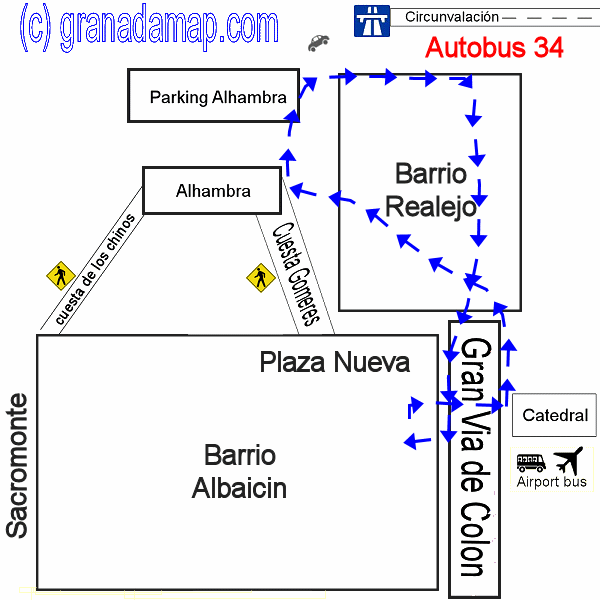
MINIBUS 31
This bus does not go to the Alhambra but it goes to may interesting places such as Mirador de San Nicolas, Paseo de los Tristes, Sacromonte, Plaza Nueva, the Albaicin.
If you are staying in the Albaicin or the Sacromonte you can use it to link up with the 30 or 34 which go up to the Alhambra.
This bus does not go to the Alhambra but it goes to may interesting places such as Mirador de San Nicolas, Paseo de los Tristes, Sacromonte, Plaza Nueva, the Albaicin.
If you are staying in the Albaicin or the Sacromonte you can use it to link up with the 30 or 34 which go up to the Alhambra.
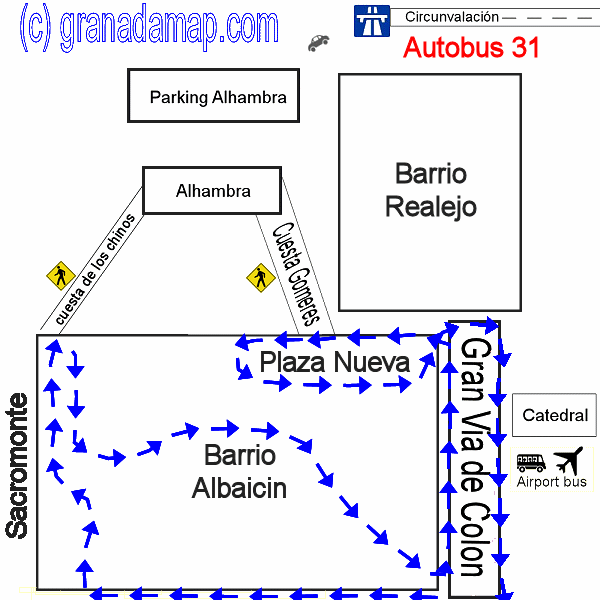
 |  |  |
| A busy day on the 31 | Coming up the Cuesta Chapiz | A narrow street near San Miguel Bajo |






Granada, Spain



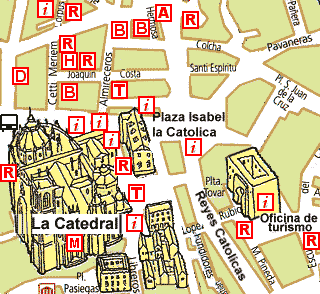
PLAZA ISABEL LA CATÓLICA
The statue in this square shows Queen Isabel granting Columbus' petition to obtain ships and supplies. The statue was built in Rome in 1892 by Mariano Benlliure and was originally located in the Paseo del Salón.
As is the case of most Christian buildings in Granada, the Cathedral was built on the site of the former Mosque. The site of the former Mosque has since been replaced by four buildings: the Cathedral, the Royal Chapel, the Sagrario, and the Merchants' Exchange.
Granada Cathedral: 16th century - on site of former main mosque - Gran Vía
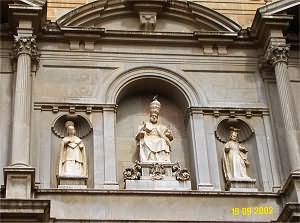 For me, the most striking fact about the cathedral is the incredibly long time it took to build. Work on the cathedral began on 15th March 1523 and it was not
For me, the most striking fact about the cathedral is the incredibly long time it took to build. Work on the cathedral began on 15th March 1523 and it was not
There is a restaurant at the back of the cathedral called the Via Colón.
See information about the Gypsy fortune tellers who frequent the area around the cathedral here.

ROYAL CHAPEL
Royal Chapel: 16th century - tombs of Monarchs Isabel, Fernando, Juan & Felipe - Gran Vía
Designs for the Royal Chapel began in 1504 and it was built between 1505 and 1521 by Enrique Egas. It was commissioned by the Catholic Monarchs for their burial site. As both Queen Isabel and King Fernando died before the Royal Chapel was finished, they were first buried in the Friary of San Francisco in the Alhambra. They were then later moved to the Chapel once it had been completed , and buried alongside King Felipe and Queen Juana (known more commonly as Juana la Loca - Juana the Mad). Although their original idea was for all future Spanish Kings and Queens to be buried here, this did not happen as the monastery in El Escorial was used instead. The tombs were carved out of marble by the Tuscan sculptor Domenico Fancelli.
This was the last gothic church to be built in Spain as Isabel and Fernando did not like the new renaissance style of the time.
Four buildings now stand on the site where the Main Mosque used to stand: the Royal Chapel, theCathedral, the Merchants' Exchange, and the Church of the Sagrario. The only thing left today of the Mosque is a well outside the chapel and it was here that ablutions were perfomed before entering.
The altarpiece consists of four painted wooden panels showing the Conquest of Granada, one of which shows Moors being baptised. On either side of the altar there are the two praying statues of Isabel and Fernando. The chapel also houses Isabel's art collection.
CORRAL DE CARBÓN
Corral de Carbón: oldest Arabic monument in Spain - spectacular doorway and simple courtyard - Calle Reyes Católicos
The Corral de Carbon is located on Calle Reyes Católicos and is the oldest monument from Arab times in Spain. It consists of a spectacular doorway (see photo) with a contrastingly simple interior courtyard. It now belongs to the Junta de Andalucía and contains shops and offices. It is worth a quick visit.
The Corral de Carbón was built in 1336 by Yussuf I. It was orginally a corn exchange and store in Arab times, and merchants and carters would stay here. After the Christian conquest, theCatholic Monarchs allowed one of their servants to live here and when he died without heirs, it was sold by public auction . By now it was called the Corral de Carbón as coal merchants would stay here, and their coal weighed nearby. It was also used as a theatre at the beginning of the 16th century.




BAÑUELO
El Bañuelo: original 11th century Arabic baths - along the River Darro opposite the Alhambra
These baths used to be part of the Mosque of the Walnut Tree (Mezquita del Nogal) which previously stood here. They were built in the 11th century and are considered to be among the oldest and mostcomplete baths in Spain. This was a traditional meeting for place for locals, who would come here for haircuts and massages. There were different times for men and women, who would seldom leave their homes (except for a weekly visit to the cemetery and a once or twice monthly visit to the baths). Brides-to-be would also come here before their weddings.
You enter the baths through a small house which was reconstructed in Christian times. At the end of a small hallway (zaguán), there is a courtyard with a pool (alberca) and from here you can access the baths themselves, with their three rooms: cool room, (sala de refresco), central room (sala central) and finally, the hot room (sala caliente). The columns were taken from Roman and Visigothic ruins and the octagonal or star-shaped holes in the roof allowed light to enter and steam to escape. They alsoreduced the weight of the roof.
Alcaicería: former silk market, now narrow streets with souvenir shops
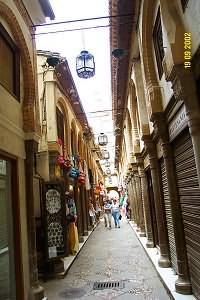 This is now taken up with souvenir shops but it was once a great bazaar where silk was made and sold. Alcaicería literally means either the "house of Caesar" or "belonging to Caesar" in recognition of the fact that Emperor Justinian granted the Moors permission to sell silk. Traditionally these bazaars were situated in the centre of a city, with
This is now taken up with souvenir shops but it was once a great bazaar where silk was made and sold. Alcaicería literally means either the "house of Caesar" or "belonging to Caesar" in recognition of the fact that Emperor Justinian granted the Moors permission to sell silk. Traditionally these bazaars were situated in the centre of a city, with
On the night of the 19th July 1843, a fire broke out in one of the shops making matches in nearby Calle Mesones and consequently the entire original bazaar burned down. It was soon rebuilt but never regained its importance as a bazaar.
CALLE ZACATÍN
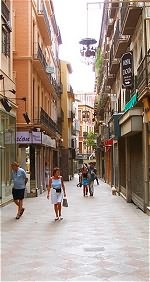
Zacatín: main shopping street, previously where craftsmen were based
This street used to stretch from Plaza Bibarrambla all the way to Plaza Nueva, running parallel to theDarro before the river was covered over. However, at the beginning of the 19th century the upper part nearest to Plaza Nueva was lost when the Gran Vía was redesigned.
Zacatín means "Clothes Market" and it was here that textiles and cloth used to be sold in the lower part of the street in Moorish times, when it was nothing more than a series of dirt huts on the river bank. There was also a potpourri of all other sorts of craftsmen such as silversmiths, tanners, dyers , tailors, shoemakers, hatters, haberdashers in the area and some street names reflecting these activities still survive today. From 1491 onwards, in order to create a better sense of order, the whole area was reorganised and the different trades were each allocated a different zone. The silversmiths therefore were relocated to the main entrance to the Alcaicería.
PLAZA BIBARRAMBLA
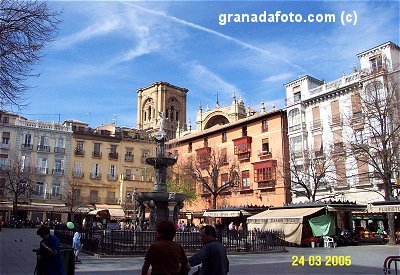
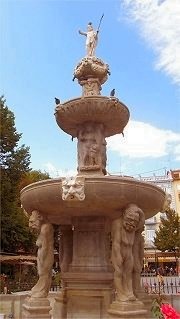 The name Bibarrambla mean "Gate of the River" since the square originally stood on the sandy river bank. In Moorish times, festivals and jousts were held here, and later in Christian times bullfights. Unlike the bullfights of today, these were extremely violent and during one which took place in August 1609, 20 bulls killed 36 people and injured another 60.
The name Bibarrambla mean "Gate of the River" since the square originally stood on the sandy river bank. In Moorish times, festivals and jousts were held here, and later in Christian times bullfights. Unlike the bullfights of today, these were extremely violent and during one which took place in August 1609, 20 bulls killed 36 people and injured another 60.
Following the Christian conquest, however, the autos-da-fé were held here to decide the fate of many citizens . Many important Arabic manuscripts, documents and books, (particularly Korans) were also burnt, as they were in other public squares all over Granda, and it is thought that as many as 1,000,000 were destroyed in this way.
Over time, many changes have been made. Arched buildings were built on one of the sides where the city scribes worked, and customs houses were set up to control the spices and textiles being brought in. This was also where horse fairs were held.
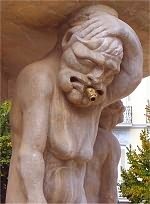 As you enter the square from Zacatín, in the 16th century the streets on the left didn't use to exist in the 16th century, and this was where the fish and meat markets were located. Later the square was used for a vegetable market but this was abolished in 1837 and a fountain and a platform erected in the middle, constructed from materials from nearby convents which had been demolished. The meat and
As you enter the square from Zacatín, in the 16th century the streets on the left didn't use to exist in the 16th century, and this was where the fish and meat markets were located. Later the square was used for a vegetable market but this was abolished in 1837 and a fountain and a platform erected in the middle, constructed from materials from nearby convents which had been demolished. The meat and Paseo de los Tristes and the Rio Darro in Granada
Paseo de los Tristes offers stunning views of the Alhambra and begins at the point where it crosses the Bridge of the Chirimias; the Chirimias are a kind of flute that was once played from a balcony or veranda built there for such use.
Although the Paseo de los Tristes is officially called Andres Manjon, it is known by this name because funeral processions on the way to the cemetery once passed through it.

Paseo de los Tristes was laid out in 1609 on land provided by the Lords of Castril. There still exists the small building with a tall square-shaped tower and façade decorated with the shields of Granada, near the high bridge of Chirimias. The fountain in the middle of the Paseo de los Tristes dates from 1609.
To the left of the Paseo de los Tristes, facing the Alhambra, extended the Districo of the Axares. The Moors called it the Hospital of Africa for its beauty and cool climate.
How to Get to the Paseo de los Tristes

For more information, see Alhambra buses and urban buses.
Carrera del Darro is name is given to the entire left bank of the River Darro, and should not be confused with the Acera del Darro.

Carrera del Darro is one of the most scenic walks in Granada. To the right of the River Darro, it is crossed by two brick and stone bridges (Cabrera and Espinosa), which link Carrera del Darro with the neighborhood of the Churra. It runs between the river, the forest of the Alhambra and the Almanzora, which extends up the slope of Gomerez.
 The street dates from the seventeenth century. Because of the damage caused in 1509 by the explosion of an ammunition dumo near the Church of St. Peter, part of the wall that ran here was demolished which changed the direction of the river, hence widening the street.
The street dates from the seventeenth century. Because of the damage caused in 1509 by the explosion of an ammunition dumo near the Church of St. Peter, part of the wall that ran here was demolished which changed the direction of the river, hence widening the street.
Carrera del Darro in Granada retains many interesting buildings from the sixteenth and seventeenth centuries and there are remains of Arab houses. buildings of the SS. XVI and XVII and there are the remains of Arab houses.

From Plaza Nueva in Granada, you can walk up to the Alhambra or sit in one of the terraces andhave a beer after visiting Granada's monuments.
Around the square are several important buildings such as the Royal Chancellery and the House of Pisa, and nearby is the lively Calle Elvira, from where you can reach the Albaycin
 The Plaza Nueva was formerly one of the most important parts of the city where various tournaments, games and bullfights were held.
The Plaza Nueva was formerly one of the most important parts of the city where various tournaments, games and bullfights were held.
Spread over the Darro River, which now runs underground, it was founded in the Christian era. Once the bridge of al-Hattabin (Bridge of Loggers) on the River Darro joined the Plaza de San Gil with the current Cuchilleros.
In 1499, the bridge was widened with a brick arch made by the moor Ali de Mediana, but it was not enough to support a great number of people crossing the river, and in August 1506 the formation of the square was authorized.
 The Plaza Nueva was initially laid out as far as the slope of the Gomerez, but it was later extended to the modern Plaza of Santa Ana, completed in 1515 by the mason Miguel Sanchez de Toledo.
The Plaza Nueva was initially laid out as far as the slope of the Gomerez, but it was later extended to the modern Plaza of Santa Ana, completed in 1515 by the mason Miguel Sanchez de Toledo.
The Plaza Nueva has been and remains a genuine representation of Granadian life. During your stay in Granada, you will pass by this square more than once, when you go or come from somewhere, as it is located in the centre of the city.
In the summer, the Plaza Nueva is a good place to have a drink on the terrace. It's also a good area for young people to stay in a hotel or apartment as it is near pubs and bars.
 You can reach Plaza Nueva by bus numbers 31, 32 and 34. For more informat
You can reach Plaza Nueva by bus numbers 31, 32 and 34. For more informat

Carrera del Darro is one of the most scenic walks in Granada. To the right of the River Darro, it is crossed by two brick and stone bridges (Cabrera and Espinosa), which link Carrera del Darro with the neighborhood of the Churra. It runs between the river, the forest of the Alhambra and the Almanzora, which extends up the slope of Gomerez.

Carrera del Darro in Granada retains many interesting buildings from the sixteenth and seventeenth centuries and there are remains of Arab houses. buildings of the SS. XVI and XVII and there are the remains of Arab houses.
How to Get to Carrera del Darro
You can get to Carrera del Darro by bus number 31. The bus stop is 'Paseo de los Tristes' or you can walk from Gran Via.Plaza Nueva in Granada – History, Hotels, Apartments And Tapas Bars
Despite its name Plaza Nueva (New Square), it is the oldest square in Granada and lies between the modern centre and the Carrera del Darro.
From Plaza Nueva in Granada, you can walk up to the Alhambra or sit in one of the terraces andhave a beer after visiting Granada's monuments.
Around the square are several important buildings such as the Royal Chancellery and the House of Pisa, and nearby is the lively Calle Elvira, from where you can reach the Albaycin

Spread over the Darro River, which now runs underground, it was founded in the Christian era. Once the bridge of al-Hattabin (Bridge of Loggers) on the River Darro joined the Plaza de San Gil with the current Cuchilleros.
In 1499, the bridge was widened with a brick arch made by the moor Ali de Mediana, but it was not enough to support a great number of people crossing the river, and in August 1506 the formation of the square was authorized.

The Plaza Nueva has been and remains a genuine representation of Granadian life. During your stay in Granada, you will pass by this square more than once, when you go or come from somewhere, as it is located in the centre of the city.
In the summer, the Plaza Nueva is a good place to have a drink on the terrace. It's also a good area for young people to stay in a hotel or apartment as it is near pubs and bars.
How to Get There

.

In the Carmen of the Martyrs, the Catholic Queen ordered the building of the first church in Granada on the top of the hill, in memory of the Christian martyrs who suffered under the Arab domination in these places.
 This would later become a bigger church and a convent, with several chapels and a cloister, and equipped with several outbuildings.
This would later become a bigger church and a convent, with several chapels and a cloister, and equipped with several outbuildings.
In the nineteenth century the convent was sold, and after passing through several owners, the palace was built with its gardens.
The Carmen of the Martyrs is a romantic set of gardens, a successful blend of French and English styling. Designated an Artistic Garden, its last owner Cristina de la Cruz donated the Carmen de los Mártires to the City of Granada, after a miserable season in which the gardens nearly disappeared. The palace and gardens were partly restored and now it is ideal for taking walks,weddings and official receptions.
Today you can visit its beautiful gardens and appreciate magnificent panoramas of the city, the Vega and the Sierra Nevada.
 • Winter (November-February): Monday-Friday from 10:00 h to 14:00 h and 16:00 h to 18:00 hours.
• Winter (November-February): Monday-Friday from 10:00 h to 14:00 h and 16:00 h to 18:00 hours.
Saturdays, Sundays and holidays from 10:00 to 18:00 hours.
• Summer (March-October): Monday-Friday from 10:00to 14:00 h and 17:00 to 19:00 hours.
Saturdays, Sundays and holidays from 10:00 to 19:00 hours
 Address of Carmen of the Martyrs: Paseo de los Mártires s/n, Granada 18009
Address of Carmen of the Martyrs: Paseo de los Mártires s/n, Granada 18009
Phone: 958 248 140
Triumph Gardens in Granada
Carmen of the Martyrs in Granada – History, Hours and Directions
The Carmen of the Martyrs is located in the surroundings of the Alhambra, south of the walled enclosure with just over seven hectares known by the Christians as the Corral de Captives, and subsequently Campo de los Mártires. Corral was called Captives in memory of the Christian captives who remained in the Arab prisons.
In the Carmen of the Martyrs, the Catholic Queen ordered the building of the first church in Granada on the top of the hill, in memory of the Christian martyrs who suffered under the Arab domination in these places.

In the nineteenth century the convent was sold, and after passing through several owners, the palace was built with its gardens.
The Carmen of the Martyrs is a romantic set of gardens, a successful blend of French and English styling. Designated an Artistic Garden, its last owner Cristina de la Cruz donated the Carmen de los Mártires to the City of Granada, after a miserable season in which the gardens nearly disappeared. The palace and gardens were partly restored and now it is ideal for taking walks,weddings and official receptions.
Today you can visit its beautiful gardens and appreciate magnificent panoramas of the city, the Vega and the Sierra Nevada.
Opening Hours of Carmen of the Martyrs

Saturdays, Sundays and holidays from 10:00 to 18:00 hours.
• Summer (March-October): Monday-Friday from 10:00to 14:00 h and 17:00 to 19:00 hours.
Saturdays, Sundays and holidays from 10:00 to 19:00 hours
Contact Information

Phone: 958 248 140
Entrance Price
Entry to the Carmen of the Martyrs is freeHow to Get to the Carmen of the Martyrs
You can reach the Carmen de los Mártires by Alhambra Bus numbers 31 and 32 (a small red minibus). You can catch these buses in Isabel la Catolica Street. Get off at the stop "Carmen de los Martires".Triumph Gardens in Granada
Until the seventeenth century, the Triumph Gardens in Granada were one of the most important districts of Granada where many of the important festivals in Granada were celebrated.

The Triumph Gardens was originally a large Arab cemetery, founded in the thirteenth century. A strong wall enclosed the cemetery and there was a tower at the entrance of each of the access roads.

On the one side the gardens, the compound was joined to the fortifications of the Albaicin, and the other side was linked with the outskirts of Granada.
Through the centuries the population grew and many buildings were built in the early sixteenth century, with whole right side of the Triumph Gardens being urbanized.
During French rule, many Spanish patriots were in hanged and shot in the Triumph Gardens, and it remained a place of public execution until 1840.
 In 1856, Mayor D. Manuel Gadea and Subiza transformed the squalid place into a small park, with gardens and fountains. The opening of the Gran Vía de Colón, and its subsequent expansion changed the face of the Triumph Gardens.
In 1856, Mayor D. Manuel Gadea and Subiza transformed the squalid place into a small park, with gardens and fountains. The opening of the Gran Vía de Colón, and its subsequent expansion changed the face of the Triumph Gardens.
The architect Antonio Flores demolished the gardens, leaving only the isolated column of the monument to the Virgin until it was moved in 1960. The new Triumph Gardens were created on the site formerly occupied by the old Plaza de Toros.

The Triumph Gardens was originally a large Arab cemetery, founded in the thirteenth century. A strong wall enclosed the cemetery and there was a tower at the entrance of each of the access roads.

On the one side the gardens, the compound was joined to the fortifications of the Albaicin, and the other side was linked with the outskirts of Granada.
Through the centuries the population grew and many buildings were built in the early sixteenth century, with whole right side of the Triumph Gardens being urbanized.
During French rule, many Spanish patriots were in hanged and shot in the Triumph Gardens, and it remained a place of public execution until 1840.

The architect Antonio Flores demolished the gardens, leaving only the isolated column of the monument to the Virgin until it was moved in 1960. The new Triumph Gardens were created on the site formerly occupied by the old Plaza de Toros.
How to get to the Triunfo Gardens
You can find more information at Granada Buses.Chapiz House in Granada - Casa del Chapiz History and Information
Turn left at the end of Paseo de los Tristes, and a little further along, at the crossing where theCamino del Sacromonte begins, two mansions are situated which are known as Chapiz House.
Chapiz House belonged to two Arab families who became new Christians when the city was conquered. They were called Lorenzo el Chapiz y Hernan Lopez el Feri.
The top part of the house cantains offices which cannot be visited, but worth a look is the garden with a beautiful view of the Alhambra and Albaycin and two lovely patios. You can also have a look at the library if you are fond of Islamic culture.
To the right of the Cuesta del Chapiz up the Camino del Sacromonte are the flamenco shows at night in the Caves of Sacromonte. Just before Casa del Chapiz is the Palacio de los Cordova which is also an interesting place to visit.
Opening Hours of Casa del Chapiz
Monday to Friday from 8:00 to 18:00 hours. In July and August: Monday to Friday from 8:00 to 15:00 pm, closed in the evenings.Contact Details
Phone: 958 222 290Cuesta del Chapiz 22, Granada 18009 (200 meters after the Paseo de los Tristes)
How to get there
You can reach the House of Chapiz in Alhambra Bus: Route 31, 32, bus stop 'Peso de la Harina' after Paseo de los Tristes.Entrance
The entrance to the Casa del Chapiz is free.an Gil y Santa Ana Church in Granada - History and Information
This is a little Mudejar church right where the Carrera del Darro begins.The Church of Santa Ana in Granada was built in 1501 in place of the mosque of Almanzra. In this church Mariana de Pineda, a nineteenth-century heroine executed for embroidering a liberal flag, was married.
Opening Hours of Santa Ana Church

Entrance
The entrance to Santa Ana Church is freeContact Details
Address: Plaza de Santa Ana 1, Granada 18009. Phone: 958 225 054How to get there
The Church of Santa Ana is next to the Plaza Nueva. You can get to the church by almost any urban bus alighting at Gran Via I.
Подписаться на:
Сообщения (Atom)
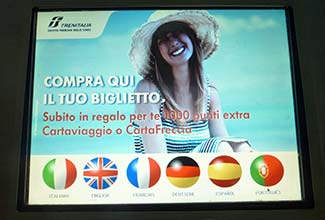
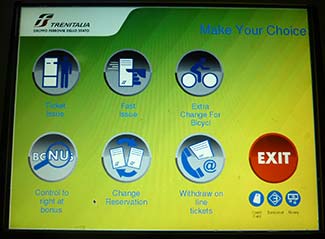

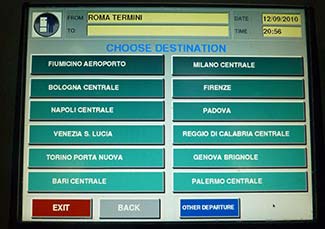
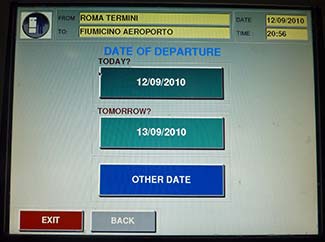
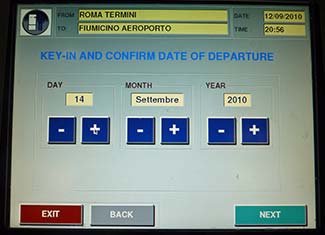

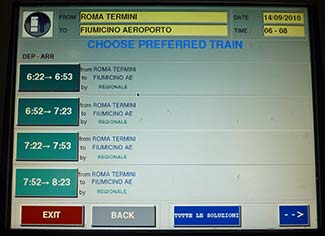
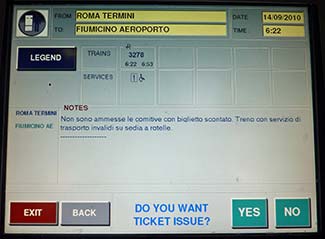
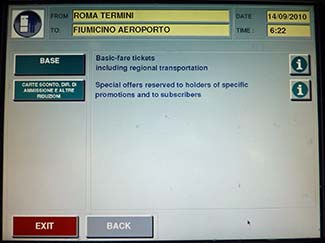

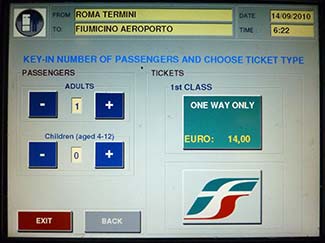
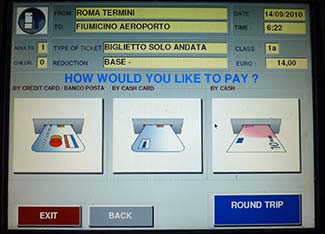
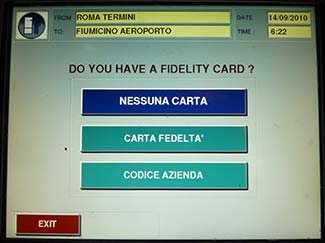

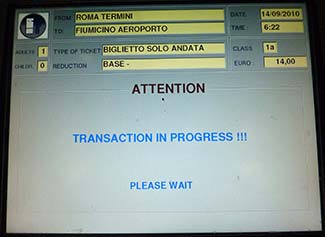
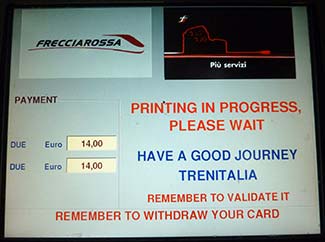
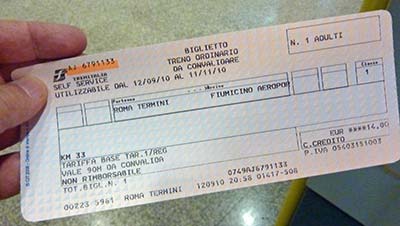

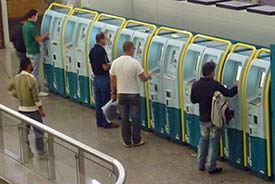
 On
On  Note:
Note: